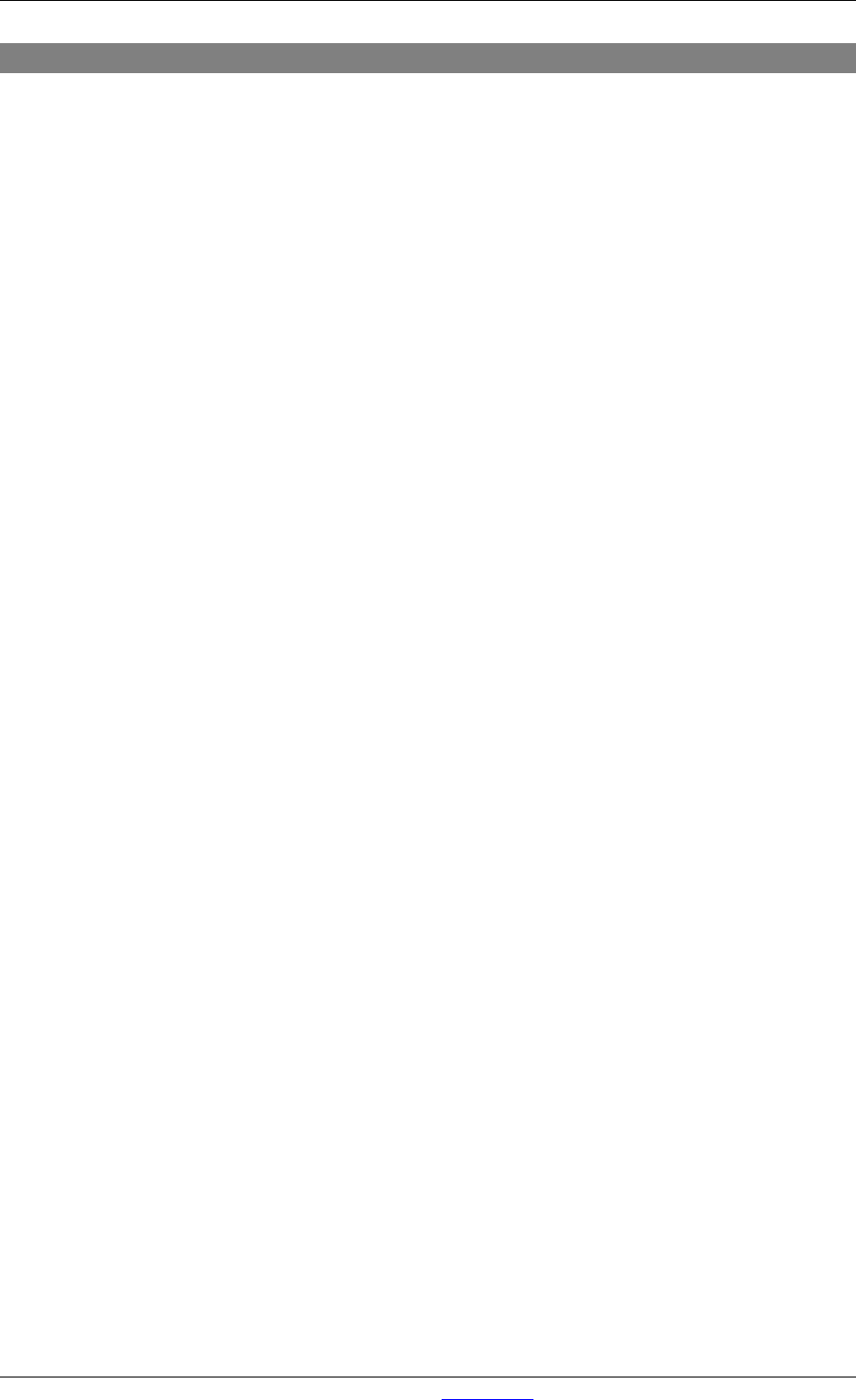User manual
Table Of Contents
- 1 Table of contents1 T
- 2 Package Contents
- 3 Introduction
- 4 System overview
- 5 Control Surfaces
- 6 AXUM Engine
- 6.1 Console 1-4 configuration
- 6.1.1 IP/Clock configuration
- 6.1.2 Global configuration
- 6.1.3 Mix buss configuration
- 6.1.4 Monitor buss configuration
- 6.1.5 Source configuration
- 6.1.6 Extern source configuration
- 6.1.7 Destination configuration
- 6.1.8 Talkback configuration
- 6.1.9 Processing presets
- 6.1.10 Module assignment
- 6.1.11 Module configuration
- 6.1.11.1 Module configuration page
- 6.1.11.2 Module preset 1A/1B, 2A/2B, 3A/3B, 4A/4B
- 6.1.11.3 Processing
- These are the programmed processing defaults for the modules. Depending on the startup settings these processing defaults will be used at startup (programmed defaults in global configuration).The field ‘Use at source select’ determines if the default module processing in the source configuration is used when a source is assigned via the module source select functionality and no processing preset is assigned in the ‘source configuration’.
- The following state/value processing sections are available:
- 6.1.11.4 Routing
- 6.1.11.5 Set module 1 to programmed startup state
- 6.1.12 Mix/monitor buss presets
- 6.1.13 Console presets
- 6.1.14 Surface configuration
- 6.1.15 Rack configuration
- 6.1.16 Source pools
- 6.1.17 Preset pools
- 6.1.18 Users
- 6.2 System configuration
- 6.1 Console 1-4 configuration
- 7 Surface(s) website
- 8 Block diagrams – Must be created
- 9 I/O Rack description
- 10 Available I/O rack cards
- 11 Patch panels
- 12 Specifications AXUM digital audio system
- 13 List Of Figures
- 14 List Of Tables
- 15 Declaration Of Conformity
- 16 Product Safety
- 17 Disclaimer
- 18 Appendix A - Network design for AXUM
- 19 Appendix B – Surface service
- 20 Appendix C – Engine functions

A·X·U·M User Manual Version 2.5 - 2011-01-28
AXUM from D&R - Phone: +31 294 418014 - E-Mail: info@d-r.nl - 10 -
4.3 Features and highlights
Because the AXUM digital audio system is highly flexible, you can make many solutions for your
mixing and routing. To have an overview on the power of the Axum digital audio system we made a
list of the most important features and highlights:
• I/O Matrix of 1280x1280 with optional I/O Cards:
- MIC inputs and GPIO’s
- Line inputs and GPIO’s
- Digital in/outputs and GPIO’s
- Line outputs and GPIO’s
- CRM/Phones outputs and GPIO’s
- ADAT in/outputs
- CobraNet in/outputs
- Firewire in/outputs
- Hybrid in/outputs
• 32 stereo modules per DSP card.
- Gain
- Low cut
- 6 band full parametric EQ
- Voice processing
- one free FX DSP for future use.
• 32 busses, default configured if:
console 1 and 2 with each a:
- Stereo Program buss
- Stereo Sub buss
- 4x Stereo Aux buss
- Stereo Dump buss
- Stereo PFL buss
• Up to 4 DSP cards
- up to 128 stereo modules
- up to 16 monitor busses.
(for example it is possible to make 4 studios with one I/O rack, or even 2 studios of 16 stereo
modules and 2 stereo monitor busses with a single DSP card in your I/O rack…)
• Advanced preset system.
• Object oriented control protocol, MambaNet
• Configuration of the AXUM nodes using one web server
• Multiple redundancy solutions
• Remote configuration via HTTP and TCP/IP
• Remote control via MambaNet over UDP/IP and TCP/IP
• Standardized cabling with RJ45 (shielded for audio connections)
• Advanced security system based
• User database for identification










